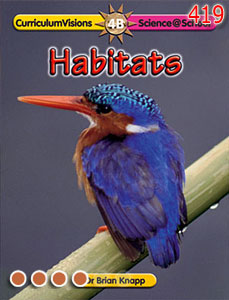Ducks are found on rivers, lakes and streams. Some even live in estuaries and on the sea.
The duck is adapted for swimming on the surface of the water by having webbed feet. The webbing allows the duck to push with greater force on the water. This in turn makes the duck move more quickly over the water surface to avoid predators and to search for food. When the duck comes out on land it waddles as the position of its legs and its webbed feet are more suited for paddling than walking.
Ducks may feed at the waters edge or they may feed in deeper water by tipping up their tails and pushing the front end of the body and the head under water. The duck has a long neck and can extend it to feed even more deeply in the water. Some ducks dive under the water to feed.
The duck's beak allows the duck to feed on many kinds of food. The duck can take water into its mouth then strain it out through its beak, catching any insect larvae, freshwater shrimps and tadpoles. A duck may use its beak to catch larger prey such as small fish and small frogs by simply snapping at them. The beak is also useful for cutting off the leaves of water plants and on land it can be used to pick up acorns, seeds and berries.
The male duck, or drake, is much more brightly coloured than the female and makes a display of head nodding, wing beating and whistling to attract a female. A brood of ducklings may be large, perhaps as many as twelve, but there are many predators, such as foxes, crows and magpies, that eat them.






